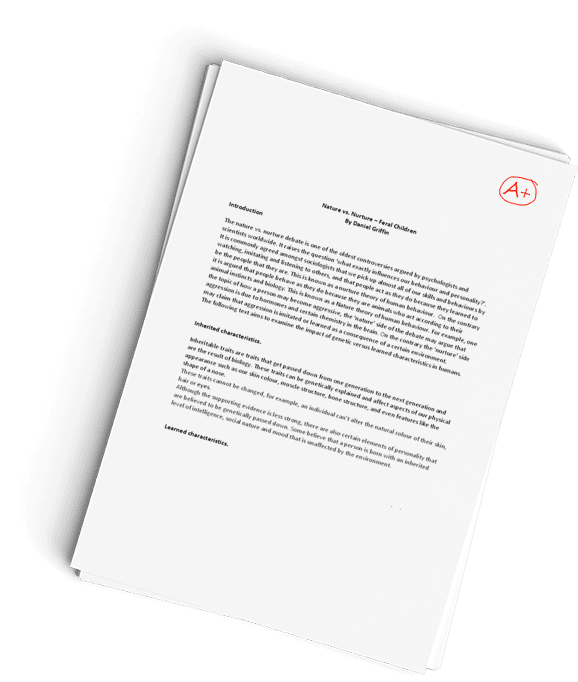paraphrase, change as much so there wouldn’t be any plagiarism,
Question Description
HIV and STD prevention for high school students with Down Syndrome is just as
important as sexual education for typically developing adolescents because people with Down
Syndrome go through puberty at roughly the same time as their typically developing peers
(Wood, 2004). Some people believe that people with Down Syndrome are not sexual beings,
that they remain child-like forever, or they are infertile, this is untrue. People with Down
Syndrome experience the same desires for intimacy and sexual contact as anyone else (Wood,
2004). Because children with cognitive disabilities often have less information than their peers,
it is important to take specialized measures to provide them the proper education.
Learners Needs Assessment
Learning about your patients needs, concerns, preferences, and readiness to learn is
important for effective communication. Assessing learning needs and readiness allows you to
individualize the information for each patient (OSU Medicine, 2006). An educational need
assessment can be defined as the gap between what is known and what should be known. When
self-assessing their educational needs, learners have been known to be inaccurate.
Questionnaires and self-reflection activities, which are subjective, are not very useful for
collecting data. Assessments such as standardized knowledge and skill assessment, are more
accurate in collecting objective data. Considerations to be made when assessing learning needs
are; find out what the patient wants and needs to know, what they already know, what they are
willing and able to learn, their priorities, and find out existing barriers to learning. Questions
you should ask yourself include, how the information will be best delivered, when is the best time for the patient to learn, what is the best environment for the patient to learn, and does the
patient need to know this (OSU Medicine, 2006)?
Learning Style/ Learning Readiness
Children with Down Syndrome usually learn and progress more slowly, but this does not
mean they are not fully capable of learning. Not all areas of development are affected, which
gives anyone teaching them an easier approach. Effective teaching strategies for adolescents
with Down Syndrome about sexual education include, drama and role play, discussion of real life
scenarios, storytelling, songs, use of dolls, pictures and story boards, videos and photographs,
art activities, and games (Wood, 2004). You will want to teach in smaller groups numbered in 8
to 10, rather than the typical 15 to 30, teach 1 to 2 objectives per session, slower-pace, and lots of
repetition (Couwenhoven, 2007). Repetition when teaching is important because most other
students get sexual education once during the school year, so in order for the information to stick
with children with Down Syndrome, they will need the information repeated back to them
multiple times (Williams, 2012). Children with Down Syndrome show delays in learning spoken
language and struggle with basic number skills. If a child has difficulty reading, the nurse or
teacher can read for them. If a child has difficulty writing, oral responses can be accepted, or the
child can dictate his or her thoughts to the nurse or teacher (Miller & Stoeckel, 2019). Learning readiness is being both willing and able to make use of instruction (OSU Medicine, 2006).
Emotional readiness is the willingness to learn a particular subject. This is influence by a
persons motivation to learn. Motivation will be greater when the person perceives the
information as relevant to their life. Experimental readiness is the persons ability to learn. Factors include, previous knowledge, present and past experiences, intellectual capability,
language, and learning style.
Goal Development/ Learning Outcomes
The goal of this teaching plan is to effectively teach a group of high school students with
Down Syndrome about HIV and STD prevention. When teaching about HIV and STD
prevention it is important to teach how they are transmitted, where they go for testing,
responsibilities of sexual behavior, prevention, and resources available (Couwenhoven, 2007).
When developing a teaching plan, it is important to first know what it is you want your students
to learn by the end of the lesson. The three domains of learning all teachers should know, are
cognitive, affective, and psychomotor. Since children with Down Syndrome have delayed
cognitive ability, the learning domain that suits them the best would be the psychomotor domain,
or the doing domain. In the psychomotor domain, you will learn through imitation,
manipulation, precision, articulation, and naturalization (Dave, 1970). The first outcome that
should come of this teaching plan is for the students to be able to recognize what safe sex is, and
how to achieve it such as, use of condoms. The second outcome is for the students to be able to
identify where they can go for help if they need tools to practice safe sex, or for any testing
required such as, Planned Parenthood or their primary care physician. The third outcome is that
the students understand the responsibilities and consequences that come with sexual behavior
such as, HIV and STDs.
Teaching Content/ Time & Resources
The teaching content would include demonstrations, games, and songs. The
demonstration would be the typical banana and condom to show how to practice safe sex. This
is a very simple, yet informative way to teach the proper use of a condom. A game called stop, slow, go would be played and this could be an interactive way for students to show their
understanding of what safe sex, and non-safe sex is. The teacher would say a scenario and the
students would either hold up a red, yellow, or green circle. Red indicating not safe, yellow
indicating partially safe, and green indicating safe. A short and catchy song would be a good
way for students to remember vital information. There will need to be a portion of the class
dedicated to one on one interaction, in order to ensure proper understanding of the subject within
each individual. Practicing safe sex to prevent HIV and STDs, is an act that will always be
important and will continue to be important especially as these high school students are ageing
and maturing. There are many different resources available, one being your family. Families
have considerable influence on childrens health practices and the success of health education
(Miller & Stoeckel, 2019).
Evaluation
There are two types of evaluation; formative and summative. Formative evaluation
evaluates a teaching during its process and a summative evaluation evaluates the effectiveness
after the teaching is completed (UoM, 2018). While you are teaching the students, you want a
good amount of positive feedback and participation to show the students are engaged in the
topic. It is important that during the teaching, they are showing a clear understanding. After the
teaching is complete, it is important to go over information that was given during the lesson to
ensure ability to recall that information. A way to evaluate this is to ask the students to perform
the same demonstration that had been demonstrated, and to ask questions with the hope that
correct answers will be given. If a song was sang during the lesson, ask the students to sing the
song at the end of the class without help.
References
Couwenhoven, T. (2007). Teaching children with Down syndrome about their bodies,
boundaries, and sexuality: A guide for parents and professionals. Bethesda, MD:
Woodbine House.
Dave. (n.d.). Psychomotor Domain. Retrieved from
http://users.rowan.edu/~cone/curriculum/psychomoto…
Miller, M. A., & Stoeckel, P. R. (2019). Client education: Theory and practice. Burlington, MA:
Jones & Bartlett Learning.
OSU Medicine. (2006). Getting your message across. Retrieved from,
https://medicine.osu.edu/sitetool/sites/pdfs/ahecp…
University of Minnesota. (n.d.). Different Types of Evaluation. Retrieved from
https://cyfar.org/different-types-evaluation
Williams, N. (2012, December 05). Retrieved August 06, 2018, from
Wood, A. (2018, May 15). Sexuality and Relationships Education for people with Down syndrome. Retrieved August 5, 2018, from https://library.down-syndrome.org/en-
us/news-update/04/2/sexuality-relationships-education-people-down-syndrome/
Have a similar assignment? "Place an order for your assignment and have exceptional work written by our team of experts, guaranteeing you A results."








